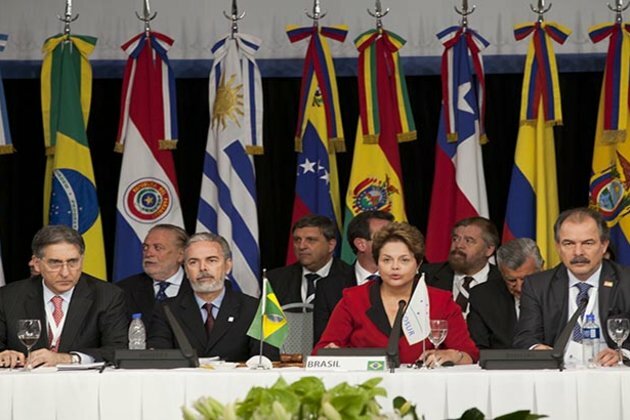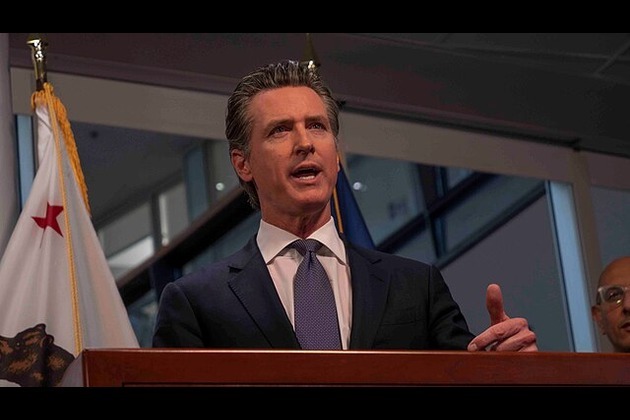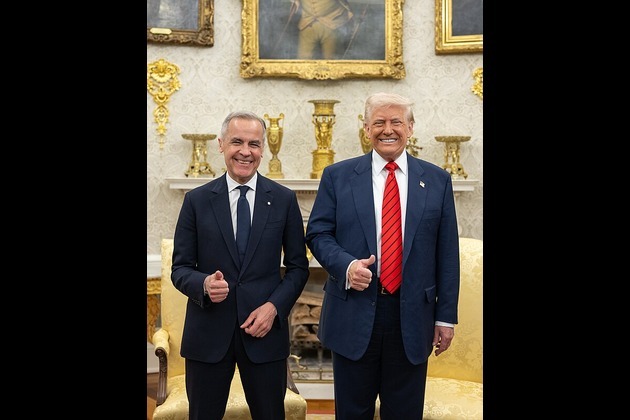Latin American Integration: The Dilemma
E-International Relations
11 Oct 2019, 12:26 GMT+10

Latin America is a difficult region when referring to regional integration. The practical and theoretical outcomes achieved regarding it have evidenced for decades that it is not working very well. Being the region in which the issue was first discussed, the reality is that it is still far from reaching the minimum regional dialogue that would allow a joint work among its countries. There are many reasons for this situation. However, the lack of conceptual comprehension (basically by practitioners) and the low political commitment, especially regarding supra-nationalism, are the most two relevant issues for this analysis.
This text offers an outlook on how the state of integration in the region is currently found. First, it gives a brief background about regional integration in Latin America, then it introduces some difficulties regarding the concept and its implementation, and finally, the discussion is oriented to the current status, difficulties, and prospects.
Regional Integration in Latin America: a Brief Background
When discussing regional integration in Latin America, the primary analysis has to consider what is understood for its conceptual framework within the region. Traditionally, and according to the related literature for studying integration -from academic works to policy papers and press analysis- regional integration addresses a diversity of issues that, eventually do not correspond with its main definition. Even though this may seem irrelevant at first sight, it could be one of the central difficulties of the region related to advancing integration. It is important to take this aspect into account to understand the background of regional dialogue.
Latin America was the place where for the first time a regional integration was actively sought. Once the majority of Latin-American nations got their independence, the discussion about the possibility of moving towards integration emerged. In 1815, Simon Bolivar had established this idea and transmitted it to Henry Cullen in a document that later became famous: The Jamaican Letter. Bolivar's ideology is summarized in the following paragraph, adapted to the uses of contemporary language and translated from old Spanish:
After the initial impulse, the Amphictyonic Panama Congress was installed in June 1826, but the results were not what had been expected. The integrationist yearning was frustrated at the same speed as it began (Lievano, 1968). This attempt at the beginning of the 19th century was rapidly spoiled by personal interests (warlords) and by those who did not share the will for political unity. This was illustrated in a text that has served to understand the reality of the phenomenon:
Considering the 1835 Customs Union (between Chile, Peru, and Bolivia), and the Customs Union of the South (1944), only by the end of the 19th century and beginning of the 20th, regional integration was resumed in the continent. Under the leadership of the USA, the first Pan-American Conference was summoned in May (24) 1888, drawn more from a collaborative perspective rather than a regional or integrative one (Quesada, 1919). Those meetings led gradually to what today is known as the Inter-American System that is comprised of the Organization of American States (OAS), the Commission and the Inter-American Court of Human Rights, which is considered one of the most advanced structures of human rights' defense in the world (CIDH, 2018).
Nevertheless, integration has not made significant improvements since then. Multiple schemes have been constituted to achieve more proximity of interests, but the results have not been positive. Since the Latin American Free Trade Association (1960), later the Latin-American Integration Association (1980), the Central American Common Market (1960) and the Andean Pact - later Andean Community (1996), to the Central American Common Market (1991), the Union of South American Nations (2008) and the Latin American and Caribbean States Community (2010); also the Community of Caribbean States (1973), the G-3 (1990), and the Common Market of the South (1991), the reality is that the region is still far from being considered integrated. One of the main barriers is found in what is understood by integration in Latin America.
Discussing the Concept: Regionalism for Latin America
The previously presented hypothesis, that what is understood as regionalism harms the regional practice, emerges when one reviews positions from authors who have researched and inscribed about regional integration in Latin America. They have written about what regional integration is, not just for the powerful and ruling elites but for academics and observers. For instance, Andres Malamud (2011, p.219) has worked with regional integration exclusively from an economic approach, which he defines as "an attempt to reconstruct the eroded national frontiers to a higher level". The author goes beyond, arguing that it should be interpreted as a "protectionist maneuver from the States, that can't guarantee by themselves their interests and objectives, and seek to do it with others". Similarly, Haas (1971, p.6) has suggested that, since the last century, regional integration could be defined as a process by which the States blend, confuse, and merge voluntarily with their neighbors, in a way that they lose certain factual attributes of sovereignty, at the same time that they acquire new techniques to jointly resolve their conflicts.
The Economic Commission for Latin America and the Caribbean, ECLAC, (2014, p.7) defines regional integration as "a multidimensional process which includes initiatives of coordination, cooperation, convergence, and deep integration" (CEPAL, 2014, p.7). Hence, the simplicity with which the subject is approached, not just in the political debates but also in the academic, does little to help Latin America to understand what it means to promote integration. Molano-Cruz (2018) manages to make it even more complex when he refers to the dynamics of inter-regionalism[2] and trans-regionalism[3]. Approaching the subject, in a recent paper in which, contrary to conventional reading that is quite attached to the European experience, he...
Without deepening the discussion, it is worth noting that not having surpassed the elemental debate about integration in the region, this could hamper deeper processes of integration. Therefore, what is clear -just by having a glimpse of four approaches- is that integration is not the state of disintegration frequently observed in the interchange between regional actors (lack of dialogue, different interests and goals, ideological controversies, and so on). It should be well-known that the reinforcement of sovereignty in each of the existing Westphalian States of Latin America is the opposite of integration.
No reference can be made to integration processes in a scenario in which the national governments do everything to prevent that supra nationality is strengthened. Each Latin American government that tries to get closer to its pairs (and neighbors) places the respect of sovereignty as a condition to advance in every kind of negotiation; this turns these approaches more into an exercise of international cooperation rather than regional integration.
Some processes of regionalization have been tried in Latin America too. However, contrary to the concept, there are cases in which countries do not share a common border. For example, the Alternativa Bolivariana para los Pueblos de America (2004), ALBA, which has been incorrectly cataloged as a regional integration process, from the regionalization perspective. This shows a clear consequence of not understanding correctly what regional integration is. ALBA can be considered an integration process but it is not a process of regionalization. Regionalization demands direct borders contact. Today, there is the New Regionalism that is oriented to the regionalization, instead of regional integration.
There is a call for the re-conceptualization of integration, adding more strength to the study of asymmetries, both inside and outside of regional groups, to achieve greater autonomy. This is certainly interesting and valid. Nevertheless, this will only make sense when it is understood what regional integration means, and stops being misunderstood as simple cooperative agreements among nations. However, it may be that in essence, this may not be a matter of interest in the region while to Europeans it has been a key issue. Perhaps, reaching a significant level of understanding has stopped, or it has never been thought of as a possibility.
Disagreements Between Theory and Practice
As previously mentioned citing the work of Molano-Cruz (2018), regarding the problems surrounding the understanding of the concept of integration in this part of the world, it is opportune to take advantage of Briceno's work (2018), who traced a similar argument. For both authors, despite working from different methodological approaches, the admiration for what Europe has achieved in terms of integration has become a stumbling block in Latin America, and even in other parts of the world. What has been commonly known as the first integrative wave in the region, has had the European paradigm as a reference and moved forward trying to copy what the old continent had achieved.
Another issue evidenced when linking theory and practice of integration in the region has been exposed before by Edgar Viera (2005) pointing out the difficulties to establish the distance between the theories of integration and the discipline of International Relations. It appears that Latin America has been distant and even absent from discussions of a theoretical character about what it means to promote regional integration. Besides that, if considered how the European integration progress was assimilated in this part of the world, a return to the discussion of what has been the aimed achievement in the region and how it has been done, it can be noticed that:
In this sense, it is relevant to state that the Dependency Theory is an approach for understanding economic underdevelopment from a perspective that accentuates the recognized constraints enforced by the political and economic global order. Proposed in the late 1950s by Raul Prebisch, Enzo Faletto, and Fernando Henrique Cardoso, among others, the Dependency Theory gained distinction in the 1960s and 1970s, while Latin America was dominated by several dictatorships. According to this approach, underdevelopment is essentially caused by the peripheral position of a country in the world economy in relation to center of power. Furthermore, the centers establish constantly strong connections among themselves and their peripheries, but the countries in the peripheries do not do the same among themselves.
According to Viera (2005), the mixture of theories, borrowing from some that were not appropriate, the inopportune application of other theories, and the abuse of the political speech, among other possible combinations, have become a fundamental cause of the Latin American mess behind the integration effort. Neither, significant progress could be achieved to explain the regional integration status of Latin America relying on approaches from International Relations.
Current Status, Difficulties and Prospects
In any case, up to this point, regional integration in Latin-America has become a point of complaint, not only for academics but also for politicians and practitioners. It should be noted that the lack of agency and structural factors that work favorably to the regional integration in Latin America has been evidenced for decades, at least clearly from the academic optic. Taken to praxis, the matter can appear more difficult to understand, because, since the 1960s until today (as it was mentioned), the governments have participated in political, economic, and even socio-cultural propositions to achieve a goal that many seem to still not understand completely.
A look into the regional integration processes reveals the crisis that has been happening since the end of the 20th century and the beginning of the 21st. Initially, the Andean Pact demanded a profound update, turning it into the Andean Community of Nations with the Modifying Protocol of the Cartagena Agreement since 1996. Then, regional integration advanced in the relaunching of the Southern Common Market, after a period without any major advances, with the 24th Summit of presidents, in which the participation of Luis Inacio Lula da Silva and Cristina Fernandez Kirchner gave a new atmosphere to the process, through more diverse participation and strengthening the cohesion of the objectives of the South Cone. Nevertheless, they were simple basic adjustments and the manifestation of good intentions that ended affecting not only the cited processes but all the regional links.
The reality has shown that there has not been significant progress regarding integration regionally, on one hand, because it is not yet fully understood what integration means and, on the other hand, because several factors have eroded what little that had been achieved. Some of these factors that keep affecting the integrative attempts are the 2008 financial crisis, the ideological and pragmatic turn in the region, the rise of China as an important economic partner for Latin American countries, and the lack of coordination and discipline among members of regional integration initiatives.
The effects of the 2008 financial crisis and the economic downturn that ensued were more durable than expected. Its impact was deeper and all markets, without exception, contracted to the point of avoiding new integration agreements or even canceling some that were already in force, as happened with the cases of the TPP (Trans-Pacific Partnership) and the NAFTA in North America respectively.
In the second place, the ideological and pragmatic turn in Latin-America after the rise of socialist and leftist trends, which encouraged new processes and "integration models" such as Unasur, ALBA and CELAC. Because of this change, nowadays, these initiatives are not only paralyzed but can be considered dead, while others have been deeply affected. In a context of such diverse actors, besides political changes over time, integration is virtually impossible. It can be noted that, except for Colombia[4], other countries have moved side to side on the political spectrum from left to right, hampering foreign, commercial, fiscal, social and other policies of being consolidated.
In the third place, and this may not seem relevant for many in the region (although it is), the emergence of China as the second economy of the world has led each Latin-American State to create its own strategic approaches to the Asian giant. While this has remarkably helped to advance the conclusion of the Agreement of the Pacific Alliance, PA, in 2012 (which is a simple agreement, not an integration process in a strict sense), it helped to crack Latin-American regional integration. It led to the return to the fragmented scenario, characterized by the struggle between those who support open regionalism, enacted by the PA, and those who reject such options and demand the defense of the agreements among regional actors that defend protectionism (even accepting Chinese interference in the region). This combined with the protectionism applied today by the United States, through several Trump´s policies, puts all regional actors in an awkward position.
Finally, and having as a reference two of the most sophisticated processes of integration in Latin-America in terms of institutional framework, the Andean Community (CAN) and the Common Market of the South (Mercosur), an emphasis must be made in the lack of coordination and discipline by its members in the diverse areas that involve such processes. Today, CAN, besides weakened, looks stagnant and with multiple defaults. The same happens with Mercosur, on one side the appearance of China as a commodities buyer put Argentina and Brazil to discuss how to proceed in relation to the Asian country without a clear agreement having been reached. On the other side, the recent changes in political matters (new administrations and trends), not only with the big two of the Common Market (Brazil and Argentina) but in all its members (including Venezuela), have them talking disparate languages and having different positions.
The current moment is not good for the projections of regional integration in Latin-America. The low optimization of the high export cycles of raw materials will probably come back again, as the historical record point to, and have (probably) negative consequences leaving Latin America as a region without a good prospect regarding regional dialogue. Despite the relative success of the Pacific Alliance and the recent approach between the European Union and Mercosur, nothing else has been displayed on the stage as a possibility of a real project of proximity, cooperation, and regional integration for the next 10 years. Maybe, it is time to forget this concept and, as was indicated by several scholars, start thinking about other ways to promote regional dialogue. At least in Latin-America, regional integration, as it is theoretically and conceptually understood, will hardly work.
Notes
[1] Quote originally wrote in Spanish. Translated by Carolina Obregon, the assistant of the author. In the same way, all original Spanish quotes have been translated by her under supervision of the author.
[2] Gilson (2005, p.309) describes inter-regionalism "as a double regional project responding to the need to pool an even greater percentage of resources in recognition of other interregional and global dynamics."
[3] "Trans boundary regionalism involves the flexible construction of international communities of interest - a process described here as 'transboundary regionalization' - within changing global economic and political contexts" (Scott, 2002, 179).
[4] The Colombian case is unique because of the discredit of the leftist leaders and movements. This bad image is supported by the guerrilla groups and their negative impact in society.
References
Bolivar, S. (2015). Carta de Jamaica, 1815-2015. Comision Presidencial para la Conmemoracion del Bicentenario de la Carta de Jamaica. Caracas: Coleccion Unidad Nuestra Americana.
Briceno, J. (2018). "El estudio de la integracion regional y del regionalismo en America Latina: entre la influencia europea y el pensamiento propio". Analisis Politico, 94, 49-74.
Cepal. (2014). Integracion Regional. Hacia una estrategia de cadenas de valor inclusivas. Santiago de Chile: United Nations, LC/G.2594(SES.35/11).
CIDH. (2018). ABC de la Corte Interamericana de Derechos Humanos: El que, como, cuando, donde y por que de la Corte Interamericana. Preguntas frecuentes. San Jose de Costa Rica: Corte IDH.
Cordeiro, J. (2007). El Desafio Latinoamericano y sus cinco grandes retos. Caracas: Mc Graw Hill.
Gilson, J. (2005). New Interregionalismo? The EU and East Asia. European Integration, 27(3), 307-326.
Haas, E. (1971). "The Study of Regional Integration: Reflections on the Joy and Anguish of Pretheorizing", In Leon N. Lindberg y Stuart A. Scheingold, [eds.], Regional Integration: Theory and Research, Cambridge, Mass., Harvard University Press.
Lievano, I. (1968). "El Congreso de Panama: Bolivarismo y Monroismo". Desarrollo Economico, 8(30/31), 193-241.
Malamud, A. (2011). "Conceptos, teorias y debates sobre la integracion regional". Norteamerica, 6(2), 219-249.
Molano-Cruz, G. (2017). "La construccion de un mundo de regiones". Revista de Estudios Sociales, 61, 14-27.
Obydenkova, A. (2006). "New regionalism and regional integration. Exploring the links between "external" influences and "internal" factors". Workshop 10: Comparative Regional Integration - Towards a Research Agenda 2006 Joint Sessions of Workshops of the European Consortium for Political Research (ECPR). Florence: European University Institute.
Quesada, E. (1919). Primera Conferencia Panamericana. Buenos Aires: Imprenta Schenone, Pasco 735.
Scott, J. (2002). "Transnational Regionalism as Paradigm and Political Reality: Consequences for Comparative Research and Co-operation Praxis". In: Hedegaard L., Lindström B., Joenniemi P., Östhol A., Peschel K., Stalvant CE. (Eds). The NEBI YEARBOOK 2001/2002. Springer, Berlin, Heidelberg.
Viera, E. (2005). "Evolucion de las teorias de integracion en el contexto de las teorias de Relaciones Internacionales". Papel Politico, 18, 235-290.
 Share
Share
 Tweet
Tweet
 Share
Share
 Flip
Flip
 Email
Email
Watch latest videos
Subscribe and Follow
Get a daily dose of Argentina Star news through our daily email, its complimentary and keeps you fully up to date with world and business news as well.
News RELEASES
Publish news of your business, community or sports group, personnel appointments, major event and more by submitting a news release to Argentina Star.
More InformationInternational
SectionNative leaders, activists oppose detention site on Florida wetlands
EVERGLADES, Florida: Over the weekend, a diverse coalition of environmental activists, Native American leaders, and residents gathered...
Beijing crowds cheer AI-powered robots over real soccer players
BEIJING, China: China's national soccer team may struggle to stir excitement, but its humanoid robots are drawing cheers — and not...
COVID-19 source still unknown, says WHO panel
]LONDON, U.K.: A World Health Organization (WHO) expert group investigating the origins of the COVID-19 pandemic released its final...
Fox faces $787 million lawsuit from Newsom over Trump phone call
DOVER, Delaware: California Governor Gavin Newsom has taken legal aim at Fox News, accusing the network of deliberately distorting...
DeepSeek faces app store ban in Germany over data transfer fears
FRANKFURT, Germany: Germany has become the latest country to challenge Chinese AI firm DeepSeek over its data practices, as pressure...
Canadian option offered to Harvard graduates facing US visa issues
TORONTO, Canada: Harvard University and the University of Toronto have created a backup plan to ensure Harvard graduate students continue...
Business
SectionTech stocks slide, industrials surge on Wall Street
NEW YORK, New York - Global stock indices closed with divergent performances on Tuesday, as investors weighed corporate earnings, central...
Canada-US trade talks resume after Carney rescinds tech tax
TORONTO, Canada: Canadian Prime Minister Mark Carney announced late on June 29 that trade negotiations with the U.S. have recommenced...
Lululemon accuses Costco of selling knockoff apparel
Vancouver, Canada: A high-stakes legal showdown is brewing in the world of athleisure. Lululemon, the Canadian brand known for its...
Shell rejects claim of early merger talks with BP
LONDON, U.K.: British oil giant Shell has denied reports that it is in talks to acquire rival oil company BP. The Wall Street Journal...
Wall Street extends rally, Standard and Poor's 500 hits new high
NEW YORK, New York - U.S. stock markets closed firmly in positive territory to start the week Monday, with the S&P 500 and Dow Jones...
Canadian tax on US tech giants dropped after Trump fury
WASHINGTON, D.C.: On Friday, President Donald Trump announced that he was halting trade discussions with Canada due to its decision...













